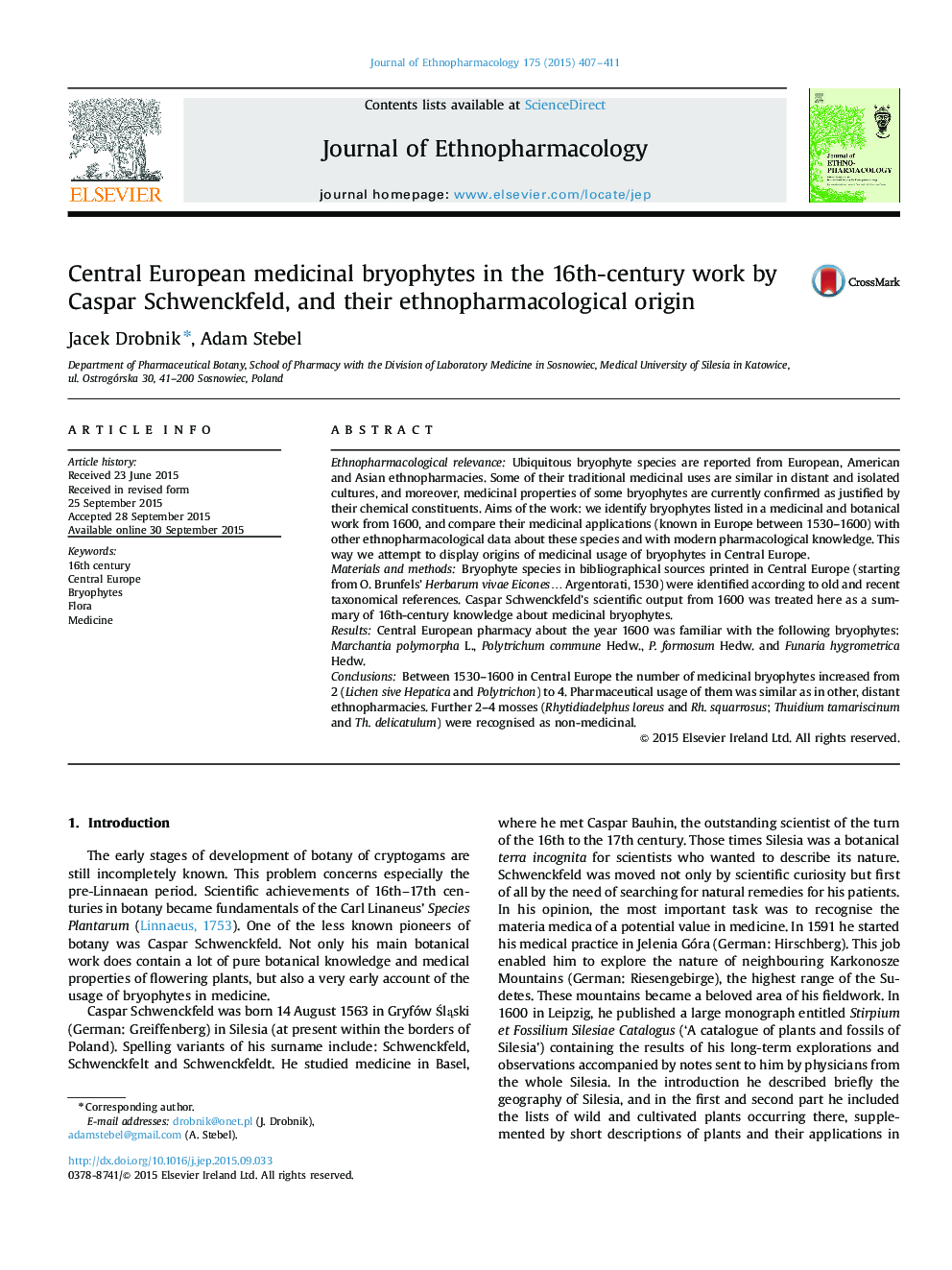| Article ID | Journal | Published Year | Pages | File Type |
|---|---|---|---|---|
| 2544934 | Journal of Ethnopharmacology | 2015 | 5 Pages |
Ethnopharmacological relevanceUbiquitous bryophyte species are reported from European, American and Asian ethnopharmacies. Some of their traditional medicinal uses are similar in distant and isolated cultures, and moreover, medicinal properties of some bryophytes are currently confirmed as justified by their chemical constituents. Aims of the work: we identify bryophytes listed in a medicinal and botanical work from 1600, and compare their medicinal applications (known in Europe between 1530–1600) with other ethnopharmacological data about these species and with modern pharmacological knowledge. This way we attempt to display origins of medicinal usage of bryophytes in Central Europe.Materials and methodsBryophyte species in bibliographical sources printed in Central Europe (starting from O. Brunfels’ Herbarum vivae Eicones… Argentorati, 1530) were identified according to old and recent taxonomical references. Caspar Schwenckfeld’s scientific output from 1600 was treated here as a summary of 16th-century knowledge about medicinal bryophytes.ResultsCentral European pharmacy about the year 1600 was familiar with the following bryophytes: Marchantia polymorpha L., Polytrichum commune Hedw., P. formosum Hedw. and Funaria hygrometrica Hedw.ConclusionsBetween 1530–1600 in Central Europe the number of medicinal bryophytes increased from 2 (Lichen sive Hepatica and Polytrichon) to 4. Pharmaceutical usage of them was similar as in other, distant ethnopharmacies. Further 2–4 mosses (Rhytidiadelphus loreus and Rh. squarrosus; Thuidium tamariscinum and Th. delicatulum) were recognised as non-medicinal.
Graphical abstractFigure optionsDownload full-size imageDownload high-quality image (436 K)Download as PowerPoint slide
